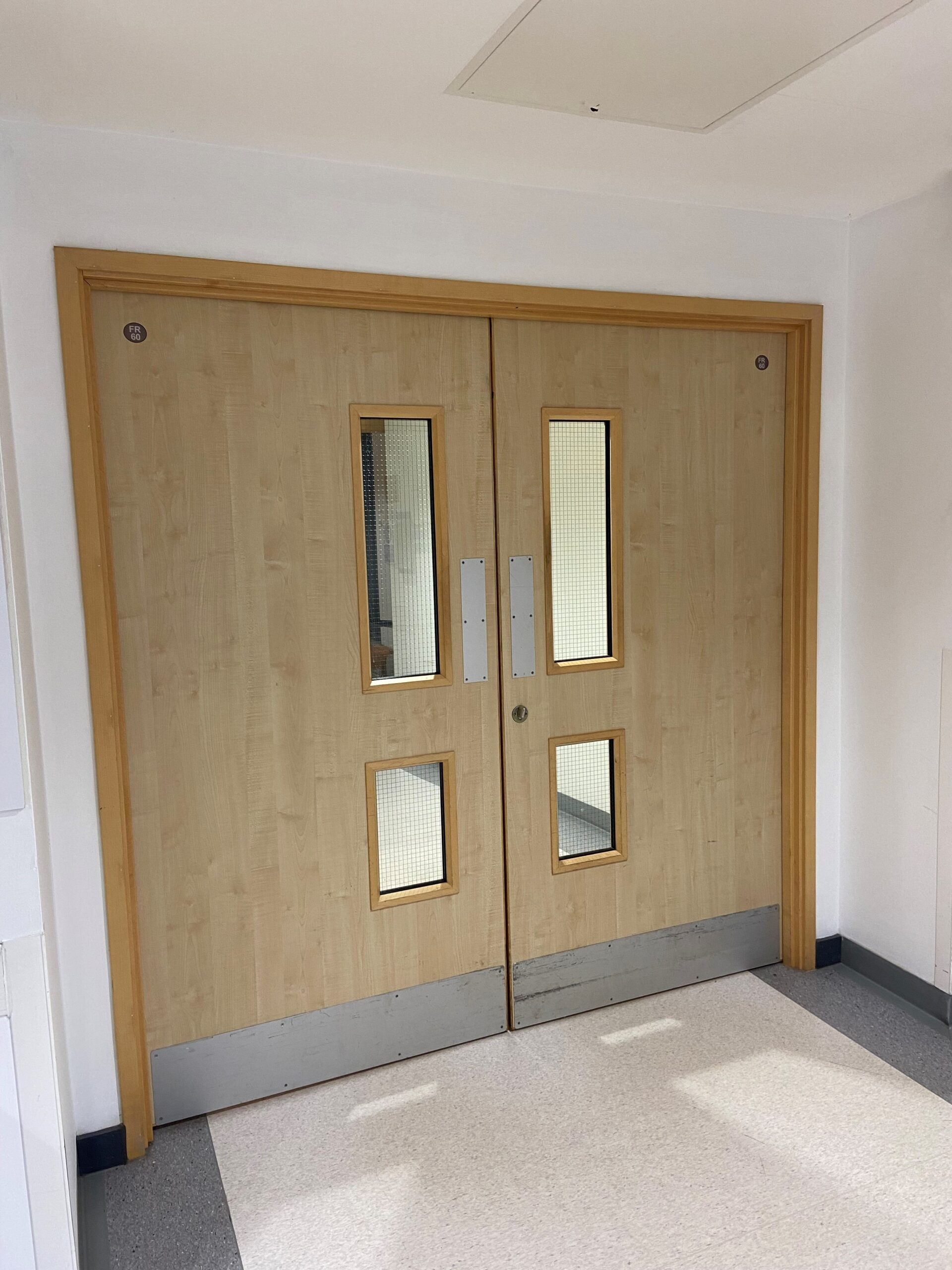The role of fire doors in enhancing building safety
Fire doors are one of the most critical elements in any building’s fire protection strategy. In 2023 alone, the Fire and Rescue Service in the UK responded to over 13,000 building fires, a reminder of the important role fire doors play in reducing the spread of fire until firefighters arrive.

More than just a door leaf
A fire door should never be defined by the door leaf alone. Frames, intumescent seals, glazing systems and hardware all work together as part of an integrated system designed to perform under fire conditions. If one component is incompatible, incorrectly installed or substituted for a non-fire-rated alternative, the entire fire door system is liable to fail.
The door itself provides the primary barrier against flames and heat, but it must be installed into a compatible frame with precise tolerances to avoid excessive gaps. Many modern fire doors also incorporate glazed apertures, not only to allow natural light and visibility but also to enable the assessment of the fire conditions on the other side of the door.
Glass in fire doors must be fire-rated and installed during the manufacturing process as part of an approved fire door system. Fire safety glass varies in its protection levels, from simple integrity (E) to advanced solutions that reduce radiant heat transfer (EW) or even provide full insulation (EI). Furthermore, the glass panes often serve multiple design and compliance demands, For example, Pyroguard Advance offers up to 89% light transmission, high UV stability and EW classification with fire resistance of 30 to 60 minutes. Considering the UK’s average fire service response time of around nine minutes, this timeframe should allow sufficient time for the fire to be reported and for emergency services to arrive and tackle the blaze.
Fire safety glass also requires compatible intumescent glazing seals and sealants to hold it securely in place under extreme heat, prevent slumping and reduce heat transfer to the surrounding timber. When exposed to fire, these seals expand to close gaps, block flames and restrict smoke and hot gases from passing. The seals are also fitted in grooves along the edges of the door leaf or frame . Without these seals, the glass can shatter prematurely or the beads can ignite, allowing fire to pass through the door.
Like every other element of a fire door, compliance relies on treating the components as part of a tested and certified system. Any modification, such as installing a letterbox or changing hardware, can compromise the integrity of the door set and risk non-compliance, unless the entire system has been re-tested and certified.
A part of the bigger picture
Building Regulations’ Approved Document B requires that buildings be divided into a number of compartments. This subdivision is designed to prevent the spread of fire from one compartment to another, allowing occupants time to escape and reducing the likelihood of large-scale incidents. In addition to minimising damage and providing more time for evacuation, compartmentation also helps to protect designated ‘means of escape,’ such as stairwells and service shafts, from smoke and fire.
An essential component of effective compartmentation is the correct specification and installation of fire doors, including any fire safety glass they contain. Problems can occur when compartmentation is breached, for example, if fire doors do not perform together as a system. This system-based approach to fire safety is becoming even more critical with upcoming regulatory changes.
From September 2029, fire doors tested to British Standard BS 476-22 will no longer comply with UK Building Regulations. Instead, compliance must be demonstrated under the European classification system EN 13501-2. These European testing standards require different testing protocols and approaches to assessing the performance of fire protection systems.
In light of these changes, the industry needs to start preparing for the transition to European fire door testing standards now. Whether through re-testing existing products or specifying fully certified solutions that already meet European classifications, early action will minimise disruption and ensure compliance well ahead of 2029.
To find out more contact us.
